THE SCREENING ROOM

A year-by-year, film-by-film history of 70-millimeter wide gauge exhibition in Southern California
Compiled by Michael Coate and William Kallay
70mm Equipped Theatre Pictures
FOX SOUTH COAST / SOUTH COAST PLAZA AND SOUTH COAST PLAZA II (aka THEATRE III)
Theatre Specifications:
Chains:
National
General / Mann / Edwards
Opened:
March 13, 1968 (Invitational "V.I.P."
Opening March 12)
Remodeled:
Original South Coast theatre auditorium split; Re-opened on June
23, 1976
Closed:
Approx.
1999
Seats:
1174 main
theatre (before twinning) 599 & 566 (after twinning)* / 700 in
South Coast Plaza II (a.k.a. Theatre III)
For a number of years, Costa Mesa was famous for its colossal mall, South Coast Plaza. Situated on former farm land, South Coast Plaza has been a high-end regional shopping mecca since the 1960s. It stands to reason that the area would soon receive a new 70mm theatre, and it happened in 1968 when National General opened the South Coast on Bristol Street parallel to the mall.
The luxurious theatre had an inviting lobby surrounded by tall glass. Similar in concept to the National in Westwood, the South Coast was the late-1960s ideal of cinema luxury. Simplicity in design, yet inviting. And according to an article in The Orange County Register, the interior was almost identical to Anaheim’s Cinemaland, which would open a month later that same year.
The auditorium was
equipped for 70mm projection. But by the mid-1970s, as with a
number of theatres nationwide, the auditorium was divided in half by
its new owner, Mann Theatres. The re-opening of this new “twin”
happened on June 23, 1976. Viewing movies in this type of
auditorium was painful. The screen seemed like it was a million
miles away in either auditorium, and the screen seemed like it was
almost always off-center. Luckily, there was an alternative
piggy-back theatre to the formally gorgeous South Coast.
According to a Dolby Stereo advertisement in Box Office (September
1985), both auditoriums of the original single screen theatre were
equipped with 70mm Six-Track Dolby Stereo.
On November 25, 1970, National General opened a new 700-seat theatre behind the older cinema with an engagement (35mm) of “It’s A Mad Mad Mad Mad World.” This new theatre, also known as South Coast Plaza II, had a fairly early concept in stadium seating for movie theatres. The seating area in front of the screen was sloped, but the back section of the theatre was on a higher foundation and sloped for stadium-seating. Although the exterior of the theatre was plain, the interior was very nice.
The screen was large and slightly curved, and the auditorium had an orange curtain motif, which was similar to NGC’s National in Westwood, CA. It was equipped for 70mm and ultimately became one of Orange County’s premiere modern movie palaces.
Audiences could enter the auditorium through one of two side entrances from the lobby. Walking up a ramp, the first thing they would notice was the enormous screen covered by curtains. They could choose to sit in the stadium section, or the standard seating area below.
The lobby was rather small, with the snack bar located straight ahead as patrons entered the front doors. The most unfortunate design of the theatre was the restroom. For a theatre with 700 seats, the bathroom could only accommodate very few people with full bladders.
Once the South Coast Plaza was split into two theatres, the South Coast Plaza II was eventually renamed the “Theatre III.”
The Theatre III
showed a number of 70mm engagements, especially during the 1980s,
and usually to a packed house. This theatre showcased the
exclusive Orange County engagement of "Days Of Heaven" (1978). Some personal memories include
seeing “Close Encounters Of The Third Kind” (1977) and being startled by
John Williams’ crashing score in the opening credits of the film. Good memories were created from the 70mm run of "Ladyhawke" (1985),
with its cool yet out of place rock score. Seeing James Cameron’s “Aliens” (1986) was like riding a roller coaster
ride with 699 other people watching a 70mm print of the film here. "Close Encounters" and "Raiders Of The Lost Ark" (1981)
were among the theatre's most successful and longest-running
engagements.
This was an excellent showcase theatre for years, especially in the
era of 70mm print runs during the 1970s and 1980s. The sound system
wasn't as spectacular sounding as some other theatres (notably THX
certified theatres during that namebrand's heyday), but quite good
overall. Presentations in 35mm were generally okay, as the smaller
format would look bloated and grainy on the huge Theatre III screen.
But it was 70mm which almost always looked best on that big screen.
Both the South
Coast and Theatre III were taken over by the Edwards Cinema Circuit
by the 1980s. The company upgraded some of the amenities of the
theatres with new neon lights and gourmet snacks.
During the 1990s, after digital sound all but killed off 70mm
presentation, Theatre III was notably equipped with digital sound.
Both the original South Coast and Theatre III were
very popular up until Edwards opened up a new 12-screen stadium-seat complex nearby
at Metro Pointe. From the start, the 12-screen complex did excellent
business, but all of the theaters were small and unmemorable. Seeing
a movie there was nothing like seeing movies at South Coast Plaza.
At one point,
Edwards had plans to turn at least one of the theatres into a large,
stadium seat luxury cinema. But Edwards filed for bankruptcy and the
plans never materialized.
The
older theatres were eventually closed.
The theatres were demolished in March 2008 and replaced by a grass
median.
FOX SOUTH COAST (ORIGINAL THEATRE)
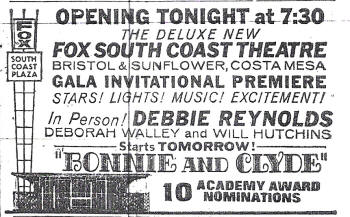 [1] [1] |
| Fox South Coast opening day ad (March 12, 1968) |
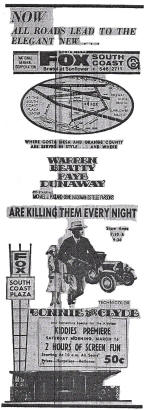 [2] [2] |
| Fox South Coast Plaza (March 13, 1968) |
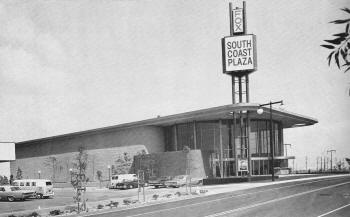 [3] [3] |
| Fox South Coast Plaza in 1968 |
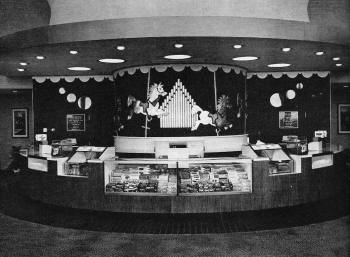 [3] [3] |
| The unique snackbar — Two doors leading to the once single auditorium are on the right and left of frame |
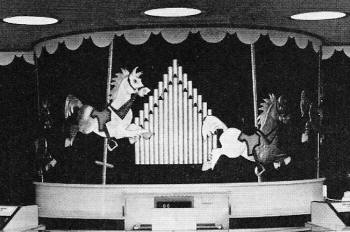 [3] [3] |
| Close-up of the snackbar's decorative carousel motif that reflected the theme of South Coast Plaza across the street |
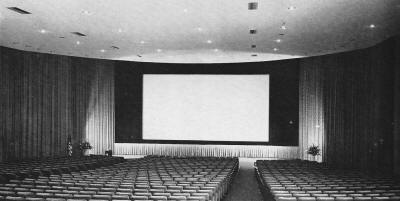 [3] [3] |
| With 1174 seats, the South Coast was a premium theatre in Orange County |
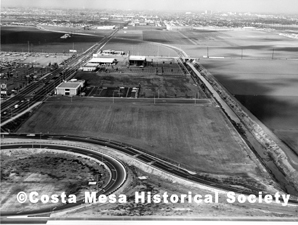 [4] [4] |
| The theatre (top-middle) in a day before massive office buildings and more shopping centers were built (c. 1969) |
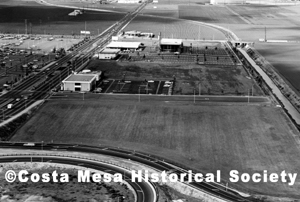 [4] [4] |
| On the lower portion of the photo, the Edwards Town Center would open years later |
 [4] [4] |
| The Fox South Coast Plaza up-close |
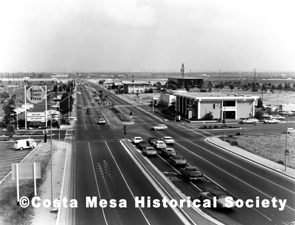 [4] [4] |
| Theatre is located on upper right side of image — The large shopping center, South Coast Plaza, would be on the left — Much of the land around the theatre and the mall was farmland |
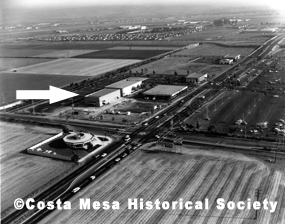 [4] [4] |
| The South Coast Plaza "II" under construction in 1970 (see below for additional photos of the newer theatre) |
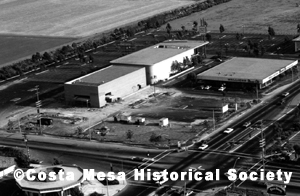 [4] [4] |
| A closer view of the newer theatre being built behind the original Fox South Coast (top) |
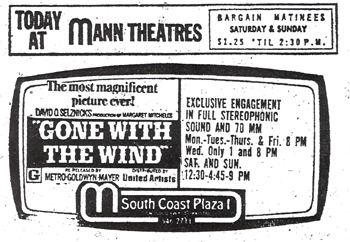 [2] [2] |
| Mann South Coast Plaza I ad for re-issue of "Gone With The Wind" (see 1969) |
 [3] [3] |
| Mann had split the original auditorium in two by 1976 — This is an approximate idea of where the split occurred — Although the new "twin" auditoriums were large by 1970s new theatre standards, sightlines were now compromised, and the screens seemed like they were very small and far away from seats in the back rows — Many large theatre auditoriums around the United States were split like this |
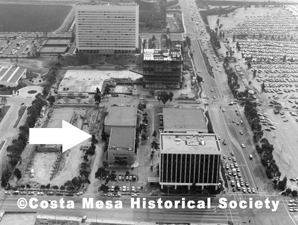 [4] [4] |
| Both theatres in 1978 |
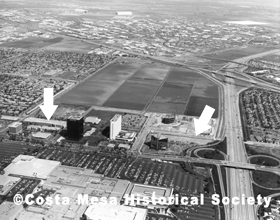 [4] [4] |
| The South Coast Plaza theatres (left arrow) and soon-to-be-built Town Center (right arrow) were prime 70mm presentation theatres — South Coast Plaza shopping center is on the bottom of the image, and the San Diego Freeway (405) is on the right (c. March 1980) |
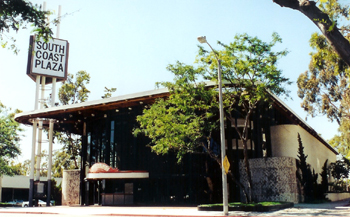 [5] [5] |
| Edwards South Coast Plaza (c. 1999) |
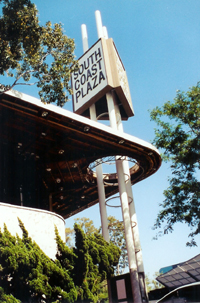 [5] [5] |
| This tall sign has been sort of a landmark in the South Coast Plaza area |
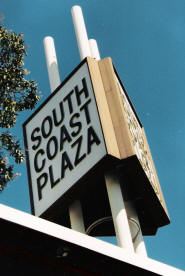 [5] [5] |
| A close up of the sign |
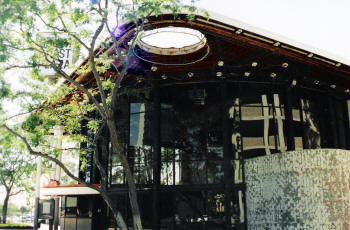 [5] [5] |
| Renovation began, but stalled due to Edwards' bankruptcy in 2000 |
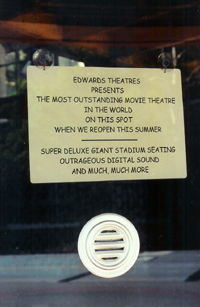 [5] [5] |
| Box office — Plans to completely renovate theatre never occurred (Enlarge) |
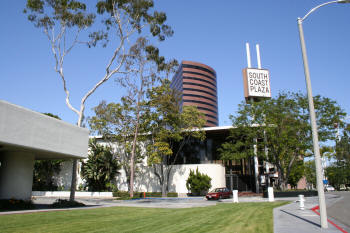 [5] [5] |
| Edwards South Coast Plaza (2005) |
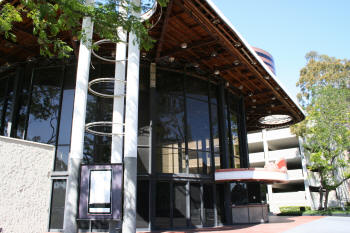 [5] [5] |
| Edwards South Coast Plaza box office, looking towards Orange County Performing Arts Center |
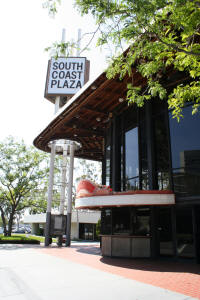 [5] [5] |
| Box office, looking towards Bristol Street and South Coast Plaza shopping center |
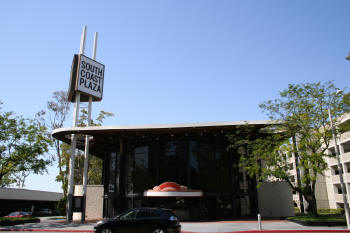 [5] [5] |
| Front view |
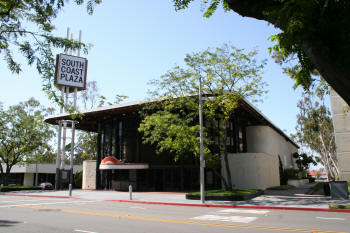 [5] [5] |
| Front view with side of building angle |
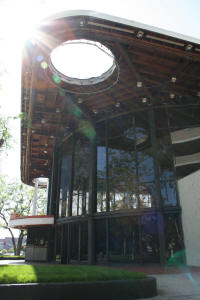 [5] [5] |
| Lobby entrance |
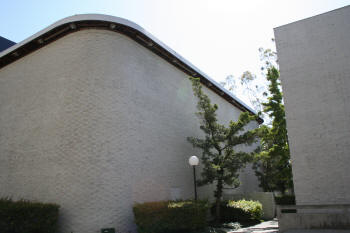 [5] [5] |
| Screen wall of Edwards South Coast Plaza (left) — Theatre III (right) |
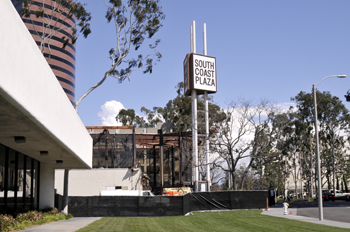 [5] [5] |
| By April of 2008, after being closed for several years, the original Fox South Coast Plaza Theatre was demolished |
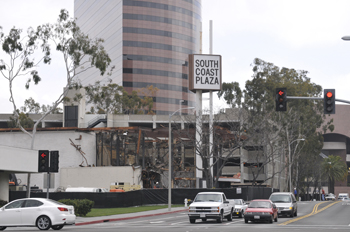 [5] [5] |
| As seen from the South Coast Plaza shopping center, the once luxurious lobby had become pieces of twisted metal and wood |
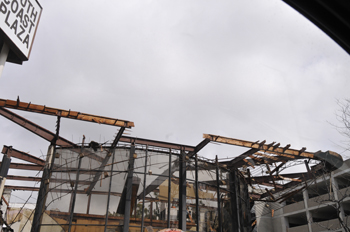 [5] [5] |
| Security around the South Coast Plaza area was very tight. Security guards on bikes and in patrol cars constantly check out the area. It was very difficult on this day to take pictures from the street without security lurking around. This was taken from my vehicle. |
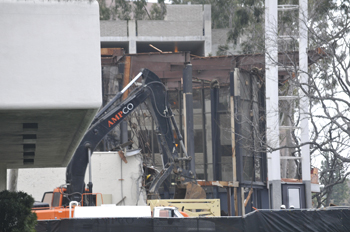 [5] [5] |
| A final and sad reminder of the destruction of a once great movie theatre |
| SOUTH COAST PLAZA II |
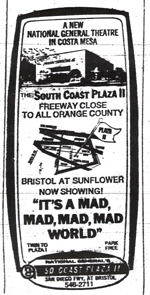 [2] [2] |
| South Coast Plaza II opening ad (November 25, 1970) |
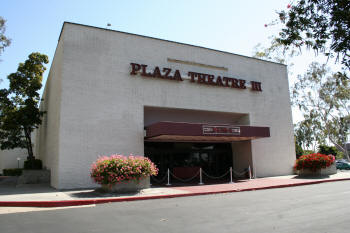 [5] [5] |
| South Coast Plaza Theatre "III" (2005) — Theatre became "III" when original South Coast Plaza was split into two auditoriums in 1976 |
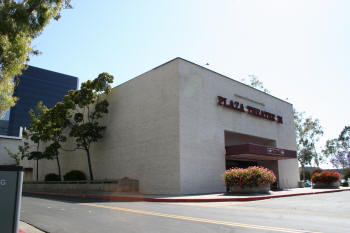 [5] [5] |
| South Coast Plaza Theatre III, looking in the direction of Bristol Street |
 [5] [5] |
| South Coast Plaza Theatre III, looking in the direction of the Orange County Performing Arts Center |
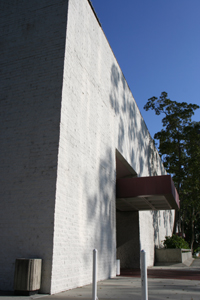 [5] [5] |
| Side exit from lobby |
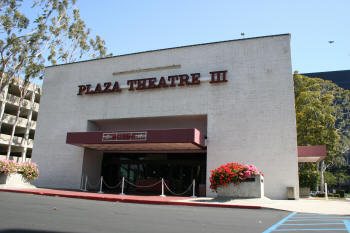 [5] [5] |
| The box office and lobby entrance |
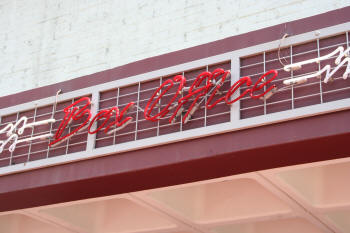 [5] [5] |
| Box office sign |
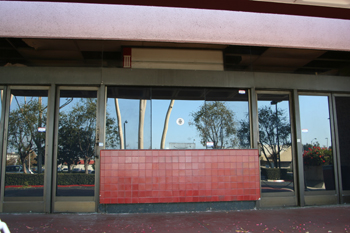 [5] [5] |
| The box office where customer service was generally indifferent during the 1980s. Thankfully the movie experience inside made up for the bad service! |
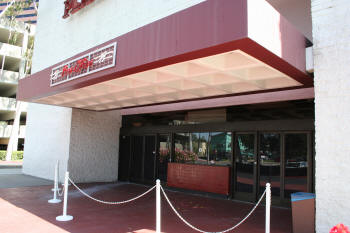 [5] [5] |
| Box office and lobby entrance up close. Lines used to wrap around the building (left) and down a long sidewalk that led to the original South Coast |
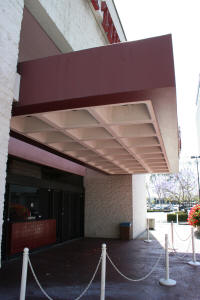 [5] [5] |
| Canopy over box office |
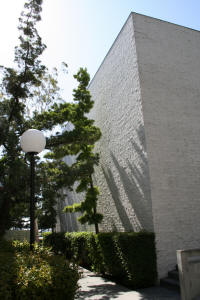 [5] [5] |
| South Coast Plaza Theatre III screen wall |
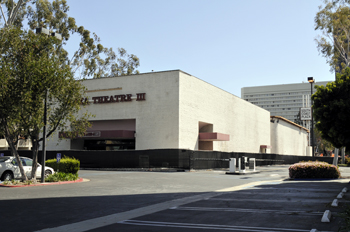 [5] [5] |
| A fence was set up around the theatre and indicated it was ready for demolition in March 2008 |
| [1] Los Angeles Times / NGC[1] Los Angeles Times / NGC |
| [2] The Orange County Register |
| [3] Courtesy Of Roland Lataille & www.cinerama.topcities.com -- Motion Picture Herald, April 22, 1968 |
| [4] © Costa Mesa Historical Society / Art Goddard (digital scanning) |
| [5] William Kallay |
| *Los Angeles Times, June 10, 1979, "Suburban Theaters: The Good, The Bad, and The Ugly" by Richard Houdek |
Special thanks to Art & Mary Ellen Goddard, and the Costa Mesa Historical Society staff and our contributors
More 70mm
70mm In New York
70mm In
Los Angeles